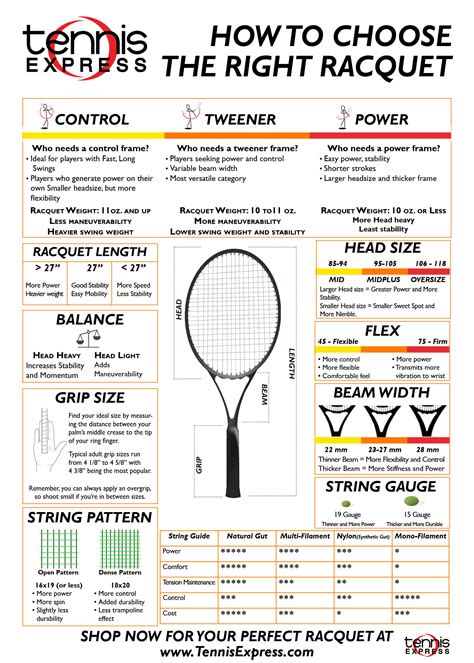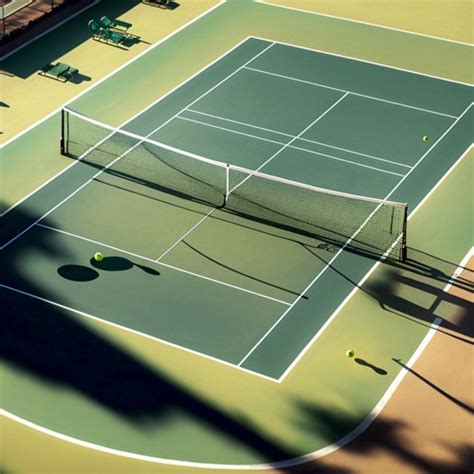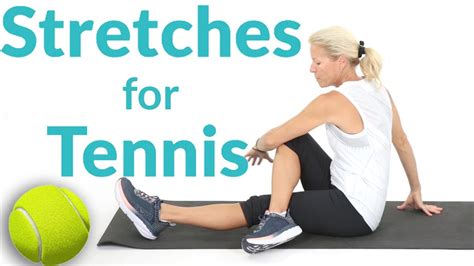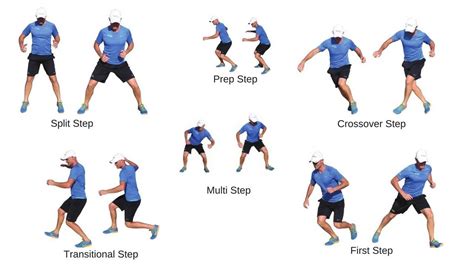Discover how to choose the perfect racket for your playing style, weight preference, materials, grip size, and testing techniques in our comprehensive guide.Choosing the right tennis racket can significantly enhance your game, making it essential for players of all levels to select a racket that complements their unique style and preferences. With a myriad of options available on the market, understanding the nuances of racket features can be overwhelming. This guide aims to simplify the process by covering critical aspects such as your playing style, ideal racket weight, materials, grip size, and testing methods. Whether you’re a beginner seeking to improve your skills or an experienced player looking to optimize your performance, our comprehensive insights will help you navigate through the various choices. Join us as we delve into the key factors that will empower you to find the perfect racket for your game.
Understanding Your Playing Style: Key To Choosing A Racket
When selecting a tennis racket, understanding your playing style is crucial for enhancing your performance on the court. Your unique approach to the game influences not only your choice of racket but also how well you can execute your shots.
Here are some considerations to help you align your racket choice with your playing style:
- Aggressive Baseline Player: If you typically engage in long rally exchanges and aim to dominate with powerful groundstrokes, you might benefit from a racket with a larger head size and a lighter frame. This setup can help generate more power and spin.
- Net Player: For players who excel at volleying and frequently approach the net, a racket with better control and maneuverability is essential. Opt for a racket that offers a smaller head size and a heavier frame to provide solid stability when finishing points.
- All-Court Player: If you adopt a well-rounded game, alternating between baseline play and net strategies, consider a racket that balances power and control. Look for a medium head size and a racket that feels comfortable in hand.
- Player’s Skill Level: Novice players may prefer rackets that offer more forgiveness on off-center hits, while advanced players might opt for racquets that allow them more precision and feel for the ball.
Identifying your style needs will direct you toward a racket that complements your game, ensuring you can perform at your best. This will make learning and mastering techniques feel more natural and enjoyable, thereby enhancing your overall experience on the tennis court.
How To Determine The Ideal Racket Weight For You
Choosing the right weight for your tennis racket is vital as it directly influences your performance on the court. The ideal weight for a racket varies from player to player and can significantly affect your ability to generate power, control shots, and sustain long matches. Here are some key factors to consider when determining your racket’s weight:
| Weight Range | Player Type | Recommended Use |
|---|---|---|
| 8-10 oz (225-284 g) | Beginner | Easy handling and maneuverability for developing skills |
| 10-11.5 oz (284-326 g) | Intermediate | Balanced power and control for more experienced players |
| 11.5 oz+ (326 g+) | Advanced | More stability and power, preferred by competitive players |
How To find your ideal racket weight involves a few simple steps:
The right racket weight is a personal choice that aligns with your playing style, physical attributes, and comfort. Regularly assess your racket’s performance and make adjustments as your game evolves.
Exploring Racket Materials: Impact On Performance And Feel
When choosing a tennis racket, understanding the various materials used in its construction is crucial. Each material offers unique benefits that can significantly affect your performance and the overall feel of the racket.
The most common materials for tennis racket frames include:
- Graphite: Known for its light weight and stiffness, graphite offers excellent power and control. Many modern rackets are made from a composite of graphite and other materials to enhance their performance.
- Aluminum: More affordable and durable, aluminum rackets are typically heavier but provide good stability. They are often recommended for beginners due to their resilience.
- Composite: This category includes rackets made of mixed materials, usually combining graphite with fiberglass or other items. Composite rackets can balance power, control, and comfort, making them versatile for various playing styles.
- Wood: Although less common today, wooden rackets offer a classic feel and are sometimes preferred by players who appreciate tradition. They tend to provide excellent touch and feedback but are heavier and less efficient compared to modern materials.
The choice of material can also influence specific characteristics of your racket:
| Material | Weight | Power Level | Control Level | Feel |
|---|---|---|---|---|
| Graphite | Light | High | Medium | Responsive |
| Aluminum | Medium | Medium | High | Stiff |
| Composite | Varies | Medium to High | Medium to High | Balanced |
| Wood | Heavy | Low | Medium | Classic |
Selecting the right racket material can enhance your game. When considering how to choose a racket, keep the how to aspect in mind—matching your playing style and preferences with the right material can lead to improved performance on the court. Experimenting with different materials will help you find the perfect match for your needs.
Identifying The Right Grip Size For Comfort And Control
Choosing the correct grip size is crucial for enhancing your overall performance on the court. An appropriate grip allows for better control and reduces the risk of injuries, such as tennis elbow. Here’s how to identify the right grip size for your game.
To determine your ideal grip size, you can use the following methods:
It’s essential to keep in mind that most brands have slightly different sizing, so always check their specific sizing chart before making a final decision. A grip that feels perfect for one brand may not feel the same for another.
When you find the right fit, you’ll notice improved handling and comfort, ultimately enhancing your play. Remember, how to assess and adjust your grip size can be a great game-changer!
How To Test Rackets: Finding Your Perfect Match
Testing a variety of tennis rackets is crucial in determining which one suits your game best. Here’s a comprehensive approach to help you in this process.
1. Visit a Local Tennis Shop: Start by going to a specialized tennis store. Many shops offer demo programs allowing you to borrow rackets to try on the court. This is an excellent opportunity to test different types without making a purchase.
2. Choose Different Racket Types: When testing racquets, consider trying various categories, such as player’s rackets, tweener rackets, and recreational rackets. This range will provide insight into how each racket impacts your performance.
3. Evaluate String Tension: The tension of a racket’s strings can significantly affect your play. When testing, you may want to try rackets with different string tension to see how they feel on contact and how they complement your playing style.
4. Play with Different Grip Sizes: Grip size can dramatically influence your comfort and control. While trying rackets, ensure you test multiple grip sizes to find one that feels natural. A well-fitted grip should enable you to maintain control without being too tight or loose.
5. Focus on Feel and Control: During your practice sessions, pay attention to how each racket feels in your hand and its control during play. This includes how it responds to both powerful and soft shots. A racket that gives you confidence during your strokes is a positive sign.
6. Analyze Performance Over Time: Don’t rush into making a decision after just one session. Test each racket over several days and in various conditions, such as singles matches and doubles games. This will give you a more rounded understanding of a racket’s performance.
By following these steps on how to test rackets, you’ll be equipped to make a well-informed decision and find the perfect match for your tennis game.
Frequently Asked Questions
What factors should I consider when choosing a tennis racket?
When choosing a tennis racket, you should consider factors such as your playing level, the type of game you play (baseline or net), racket weight, grip size, head size, and the balance of the racket.
How does racket weight affect my performance?
Racket weight affects your swing speed and stability. Lighter rackets are easier to maneuver, while heavier rackets provide more power and stability on the ball.
What is the importance of racket grip size?
Grip size is crucial for comfort and control. An improper grip can lead to injuries or decreased performance. It’s important to choose a grip size that allows you to hold the racket comfortably without straining your hand.
What types of racket head sizes are available, and how do they impact my game?
Racket head sizes typically come in three categories: small (below 85 sq. in.), medium (85-105 sq. in.), and large (over 105 sq. in.). Large heads offer more power and a larger sweet spot, which is ideal for beginners, while smaller heads provide more control for advanced players.
Should I consider the racket’s balance and how it fits my style?
Yes, the balance of a racket—whether it is head-heavy, head-light, or even balance—can significantly affect how it performs during play. Head-heavy rackets offer more power, while head-light rackets provide better maneuverability.
Is it necessary to test a racket before purchasing it?
Yes, testing a racket is highly recommended to ensure it feels right in your hand. Many stores offer demo programs, allowing players to try different rackets before making a final purchase.
What role does string tension play in racket performance?
String tension influences the racket’s feel and responsiveness. Higher tension provides more control, while lower tension allows for greater power and comfort. It’s essential to find the right balance based on your playing style.









